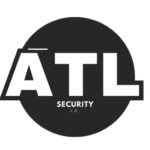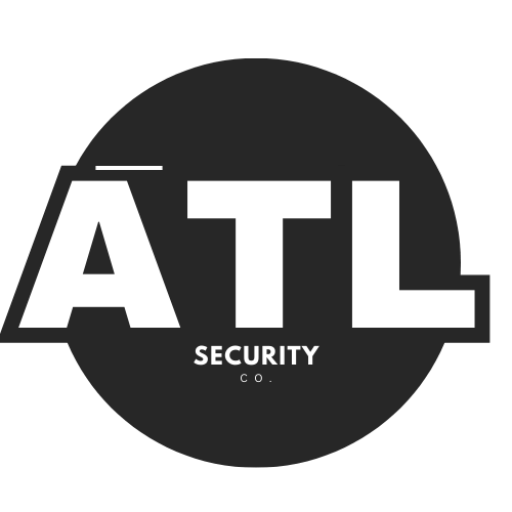In recent years, artificial intelligence (AI) has transformed many aspects of our lives, including security systems. Security cameras are no longer just simple devices that record footage; they have evolved into smart tools that can analyze and interpret data in real-time. This advancement allows for more effective monitoring and enhances overall security.
With AI, security cameras can recognize faces, detect unusual activities, and even alert homeowners or security personnel about potential threats. The integration of AI into security camera systems has made them more efficient and reliable. Traditional cameras often required constant human oversight, but AI can automate many of these tasks.
This means that security personnel can focus on responding to alerts rather than sifting through hours of footage. As a result, the combination of AI and security cameras not only improves safety but also streamlines the monitoring process, making it easier for users to manage their security needs.
Key Takeaways
- AI technology enhances the capabilities of security cameras by enabling them to analyze and interpret visual data.
- Maximum coverage is crucial for security cameras to effectively monitor and protect a given area.
- Factors such as lighting, obstructions, and potential blind spots should be considered when determining the placement of security cameras.
- AI can recommend optimal locations for security cameras based on factors such as foot traffic, entry points, and potential security threats.
- AI-optimized camera placement offers benefits such as improved surveillance accuracy, reduced false alarms, and enhanced overall security.
Understanding the Importance of Maximum Coverage
When it comes to security, maximum coverage is crucial. A well-placed camera can capture every corner of a property, ensuring that no blind spots exist. Blind spots are areas that cameras cannot see, making them vulnerable to theft or vandalism.
By maximizing coverage, property owners can deter potential criminals and enhance their overall security. Moreover, maximum coverage allows for better monitoring of activities within a space.
Whether it’s a home, office, or public area, having a clear view of all angles helps in identifying suspicious behavior.
This comprehensive surveillance can be vital in emergencies, as it provides crucial information to law enforcement or security teams. In essence, ensuring maximum coverage is a fundamental step in creating a secure environment.
Factors to Consider When Placing Security Cameras

Several factors come into play when deciding where to place security cameras. First and foremost is the layout of the property. Understanding the architecture and flow of the space is essential for effective camera placement.
For instance, entry points like doors and windows are prime locations for cameras since they are common targets for intruders. Additionally, high-traffic areas should be monitored to capture any unusual activity. Another important factor is lighting conditions.
Cameras need adequate lighting to capture clear images. Areas that are poorly lit may require additional lighting or specialized cameras designed for low-light conditions. Weather conditions also play a role; outdoor cameras should be weatherproof to withstand rain, snow, or extreme temperatures.
By considering these factors, property owners can ensure that their security cameras are positioned effectively for optimal performance.
AI-Recommended Locations for Security Cameras
AI technology can significantly enhance the process of determining the best locations for security cameras. By analyzing data from previous incidents and current layouts, AI can suggest optimal placements that maximize coverage while minimizing blind spots.
For example, AI algorithms can identify high-risk areas based on crime statistics or patterns of movement within a space.
Additionally, AI can recommend camera placements based on the specific needs of the property owner. For instance, if a homeowner frequently experiences package thefts, AI might suggest placing cameras near delivery areas or porches. This tailored approach ensures that security measures are not only effective but also relevant to the unique circumstances of each property.
Benefits of AI-Optimized Camera Placement
The benefits of AI-optimized camera placement are numerous. First and foremost, it enhances security by ensuring that all critical areas are monitored effectively. With AI’s ability to analyze data and recommend placements, property owners can feel more confident that their security systems are working at their best.
Moreover, AI-optimized placements can lead to cost savings in the long run. By strategically positioning cameras, property owners may avoid the need for additional equipment or installations later on. This efficiency not only saves money but also reduces the time and effort spent on managing security systems.
Ultimately, AI-optimized camera placement creates a more secure environment while streamlining the overall process.
Common Mistakes to Avoid When Placing Security Cameras

Overlooking Blind Spots
When placing security cameras, it’s easy to overlook areas that are not visible to the cameras. However, failing to account for these blind spots can leave properties vulnerable to intrusions. It’s essential to conduct a thorough assessment of the property before installation to identify these potential gaps.
Optimizing Camera Angles
Another common mistake is neglecting the importance of camera angles. Cameras should be positioned at angles that provide clear views without obstructions. Placing cameras too high or too low can hinder their effectiveness.
Considering the Field of View
Some people forget to consider the field of view when placing security cameras. Wide-angle lenses may be necessary in larger spaces to ensure comprehensive coverage. By taking the field of view into account, property owners can ensure that their security cameras are providing the best possible coverage.
By avoiding these common pitfalls, property owners can significantly enhance their security systems and better protect their properties.
Integrating AI with Security Camera Systems
Integrating AI with security camera systems is a game-changer for modern surveillance. This integration allows cameras to not only record footage but also analyze it in real-time. For instance, AI can differentiate between normal activity and suspicious behavior, sending alerts when necessary.
This capability reduces false alarms and ensures that security personnel focus on genuine threats. Furthermore, AI integration enables advanced features such as facial recognition and object detection. These technologies allow for more precise monitoring and can help identify known individuals or track unusual movements within a space.
As AI continues to evolve, its integration with security camera systems will likely become even more sophisticated, providing enhanced safety and peace of mind for users.
Maximizing Security with AI-Recommended Camera Placement
In conclusion, the combination of AI technology and strategic camera placement is revolutionizing security systems. By understanding the importance of maximum coverage and considering various factors when placing cameras, property owners can significantly enhance their safety measures. AI’s ability to recommend optimal locations ensures that every critical area is monitored effectively.
The benefits of AI-optimized camera placement extend beyond just improved security; they also lead to cost savings and increased efficiency in managing surveillance systems. By avoiding common mistakes and integrating AI with existing camera setups, users can create a robust security framework tailored to their specific needs. As technology continues to advance, leveraging AI in security will become increasingly essential for protecting homes and businesses alike.
FAQs
What is the importance of placing security cameras for maximum coverage?
Placing security cameras for maximum coverage is important for ensuring comprehensive surveillance of an area, minimizing blind spots, and enhancing overall security measures.
How can AI help in determining the placement of security cameras for maximum coverage?
AI can analyze the layout of an area, identify potential blind spots, and recommend optimal locations for placing security cameras to achieve maximum coverage.
What are some common areas recommended by AI for placing security cameras?
Common areas recommended by AI for placing security cameras include entry points, high-traffic areas, parking lots, and areas with limited visibility.
What are the benefits of following AI recommendations for security camera placement?
Following AI recommendations for security camera placement can lead to improved surveillance coverage, enhanced security effectiveness, and better protection against potential security threats.
How can businesses and homeowners benefit from AI-driven security camera placement recommendations?
Businesses and homeowners can benefit from AI-driven security camera placement recommendations by achieving comprehensive surveillance coverage, reducing security vulnerabilities, and enhancing overall safety and security measures.





